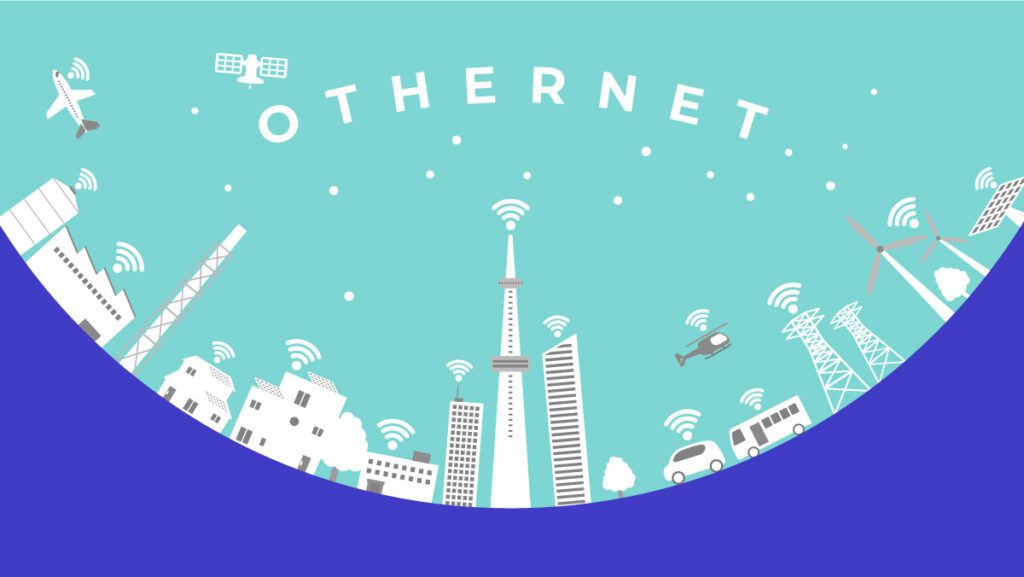Can Othernet Extend Internet Connectivity to Secluded Areas?

This trend is similar to the “connected world,” describing how our two realities are merging into only one. It’s mind-moving how the Internet became our reality, with the inability to walk a couple of hours without using our mobile devices.
The Internet is seemingly transferring into an “internet.” We won’t be able to differentiate between reality and virtual reality in a few years.
The Outernet made the digital world as essential to us as oxygen, and we now take it for granted and don’t notice it anymore.
Othernet Inc is a broadcast data company that was previously known as Outernet. The name of the company and service was changed in July 2018 due to trademark issues. The name Outernet is now owned by Outernet Global Ltd, a media sales, music and property venture backed by The Blackstone Group.
Othernet Definition
Users in North America, Africa, and Europe can access Othernet’s content using a satellite receiver and a tuner. At the same time, founder Syed Karim anticipates taking it further with a mobile service set for a hopeful release next July.
“Can you imagine if the information was free for everyone?” said the homepage of Outernet, a service that is changing the way the Internet is accessed worldwide.
The Othernet is a global data broadcasting system. Karim stressed that the benefit of the system is that the broadcast goes from “one to many and hence one to infinite.”
It produces offline arrangements of Internet content such as Project Gutenberg e-books and Wikipedia pages and hopes to provide apps and operating systems in the future. The content is determined partially via public opinion and partly through a meticulous and strict selection procedure.
Satellite transmission limits the bandwidth for data transmission, and so the founders of the platform have to select carefully when choosing which content, they want to supply. Part of the material delivered by Othernet will be demanded by users and applied by popular vote. There is also a certain percentage of sponsored content.
How Does it Work?
According to Othernet’s website, the creators operate on a receiver built on Raspberry Pi- a Linux-running single-board computer the size of a credit card armed with one or two USB ports and an ARM processor.
Raspberry Pi’s presence is increasing lately, especially amongst small-scale designers, due to its unreasonable specifications, which makes it suitable for it’s purpose, as it’s not only cheap and portable but also consumes less power than a traditional computer. Users of the service will require a DVB-S satellite dish with a low-noise block downconverter (LNB) and a receiver that is consistent with Linux.
The company is selling USB tuners in its store and is planning to sell entirely produced receivers shortly, eliminating the middleman and keeping things cheap for consumers.
Using the same way as satellite television works, satellites are planning to broadcast Outernet’s material for the pleasure of anyone with the appropriate hardware and software.
Satellite Internet is not a new idea; it’s been around since the early 1990s and is being made available by some corporate to rural areas . Although it helps access the Internet from rural locations, it can be pretty frustrating due to the extended ping time, low capacity for bandwidth-heavy transmissions, and security risks growing by the day that’s freaking out the internet.
However, the platform offers an archive of information transmitted through space, more like a guide or an encyclopedia than a live all-access internet connection.
Difference between the Internet and Othernet
The difference between the Internet and Othernet is that an internet connection is bidirectional, like a device that sends and receives data. In the case of Othernet receivers, they can receive data from satellites but cannot transmit anything in return.
Why is it Essential?
Offline content is not considered an essential factor for those fortunate enough to have full access to the web. But for African countries, that is not the case. Despite the increase in connectivity during the COVID-19 pandemic, around 2.9 billion people still have never used the Internet, and 96 percent live in developing countries.
The global Internet is essential in our world continually changing safety precautions, globalization, and health. That is necessary to access the information they require, specifically in Africa, with sub-Saharan Africa amounting to 1.2 million of the world’s HIV/AIDS cases.
While Africa creates up 15 percent of the world’s population, only 26.5 percent of Africans have access to the Internet, while 9.8 percent of the world’s Internet users are African. Governments that prevented people from accessing their right to information, will be provided a library from Othernet.
Without considering the social change it is putting into effect, it’s a service that fulfills a substantial role in the market and will change how the Internet is accessed. It will be possible to browse Wikipedia even from the summit of a mountain or the middle of the desert. The future extension of the platform’s services are contingent on the level of funding they receive and whether it will take off on a global scale or not. Only time will tell.
Summary
Using the Internet and getting regular access is about as common as flying cars for 60 percent of the world’s population. Around 5 billion people lack direct internet access because they live in remote, rural areas or due to restrictive censorship by the local government.
However, Othernet is expecting to succeed where the Internet has failed, while it’s working on getting a new breed of satellite-based communication off the ground, promising to give even the most remote corners of the globe access to the whole of humanity’s collective knowledge.
Inside Telecom provides you with an extensive list of content covering all aspects of the telecom industry. Keep an eye on our technology news section to stay informed and updated with our daily articles.
